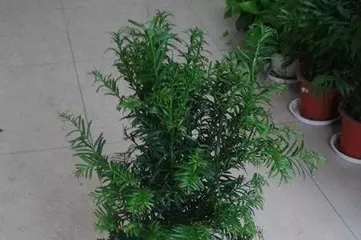Yew is an indoor plant with high ornamental value. It not only has a good decorative effect but also purifies the air. However, caring for a yew is not simple and requires certain skills and methods. This article will introduce in detail how to care for a yew indoors, turning your home into a small green paradise.

I. Methods and Precautions for Selecting a Yew
When selecting a yew, first check if the canopy is well-shaped, the leaves are vibrant in color, and the bark is intact. In addition, pay attention to the health of the yew, such as whether it has pests or diseases. It is best to choose plants with a beautiful shape, developed roots, dark green leaves, upright branches, and a neat tree form.
II. Suitable Growing Environment
Yew prefers a warm, humid, and well-ventilated environment. The most suitable growing temperature is 15°C-25°C, with a relative humidity of 50%-80%. In terms of light, yew likes low light and should avoid direct sunlight. At the same time, maintain good air circulation indoors and do not let the yew stay in a confined space for a long time.

III. Reasonable Watering Methods
Yew likes a moist environment, but it should not be overwatered. Generally, an indoor yew needs watering once or twice a week. If the environment is relatively dry, the frequency of watering can be appropriately increased. However, be careful not to let the soil become too waterlogged, as this can lead to root rot and affect the plant's growth.
IV. Proper Fertilization
During the growing period, yew needs appropriate nutrients to support its growth and development. Generally, fertilize once every 2-3 months. Using organic fertilizers or plant nutrients such as potassium dihydrogen phosphate can provide sufficient nutrients for the yew.
V. Timely Pruning and Shaping
The shape of a yew is very beautiful, but during the growth process, problems such as crossed or twisted branches may occur, requiring timely pruning and shaping. During pruning, be careful not to prune too frequently or excessively, as this will affect the growth of the plant.

VI. Pest and Disease Control
Yew is susceptible to pests and diseases such as aphids, mites, and powdery mildew, and timely control is necessary. Generally, you can use the method of spraying pesticides to control pests and diseases. However, pay attention to the concentration and method of using the agent to avoid affecting the plant.
VII. Properly Turning the Pot and Replacing the Soil
During the growth process, yew will gradually consume the nutrients in the soil and needs to have its soil replaced regularly. Generally, replace the soil once in the spring or autumn each year. When replacing the soil, you can also turn the pot to give the plant a new growing environment.
VIII. Reasonable Shading
Yew likes low light, but during the hot summer months, it needs appropriate shading. You can set up sunshades or use shading facilities like shade nets on windows or balconies to provide a suitable growing environment for the yew.
IX. Proper Transplanting Methods
During the growth process, yew needs to be transplanted regularly to ensure the development and growth of its roots. Generally, transplant once every 2-3 years. During the transplanting process, be careful not to damage the plant's roots and provide it with a new growing environment.
X. Timely Disposal of Fallen Leaves and Dead Branches
During the growth process, yew may have problems such as fallen leaves and dead branches, which need to be dealt with in a timely manner. When handling, be careful not to let fallen leaves and dead branches accumulate on the soil surface, as this will affect the growth and development of the plant.
XI. Maintaining Suitable Humidity
Yew needs suitable humidity to support its growth and development. In a dry environment, problems such as yellowing and withering of leaves are prone to occur. When caring for a yew, maintain suitable humidity, and you can use equipment such as a humidifier to increase indoor humidity.
XII. Regular Dust Removal and Wiping of Leaves
The leaves of a yew are prone to accumulating dust, which affects the plant's photosynthesis and respiration. When caring for a yew, regularly perform dust removal and leaf wiping to ensure healthy growth.
XIII. Paying Attention to Temperature Changes
Yew is relatively sensitive to temperature changes. During winter or high summer temperatures, attention should be paid to controlling the indoor temperature. Avoid temperatures that are too low or too high, as this will affect the growth and development of the yew.
XIV. Isolation from Other Plants
Yew needs to be planted separately and isolated from other plants. This is because yew is susceptible to bacterial infections from other plants, which will affect its growth and development.
XV.
Yew is an indoor plant with high ornamental value, but its care also requires certain skills and methods. When caring for a yew, pay attention to aspects such as the growing environment, watering, fertilization, pruning and shaping, and pest and disease control. Only with careful care can the yew thrive at home, bringing us fresh air and a beautiful visual experience.